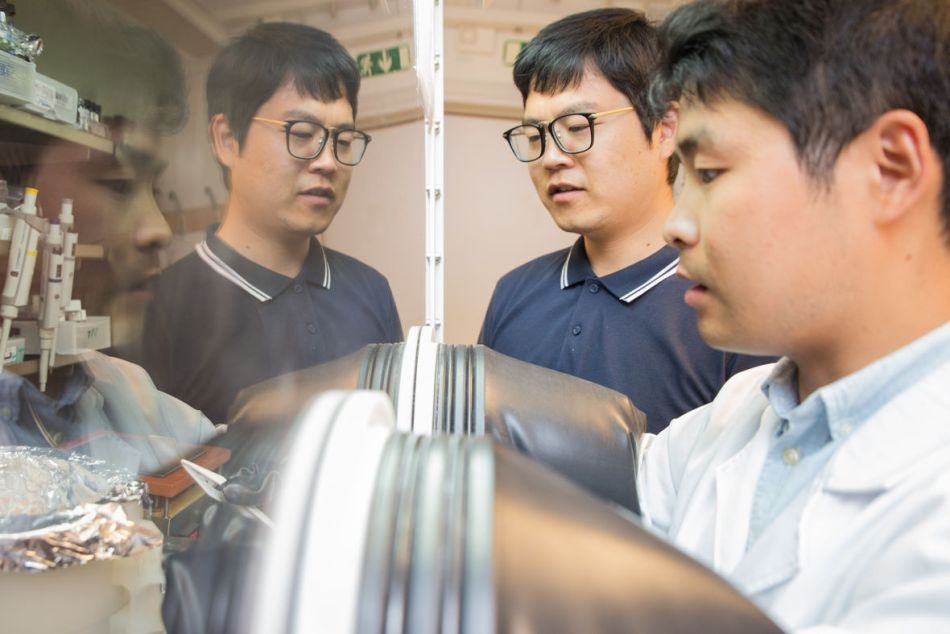Jul 18 2019
Researchers at LiU working with contemporaries from China have demonstrated how to achieve efficient perovskite light-emitting diodes (LEDs). In an article published in Nature Communications, they provide procedures on fabricating superior-quality perovskite light emitters, and subsequently high-efficiency perovskite LEDs.
 Sai Bai and Zhongcheng Yuan in the laboratory. (Photo credit: Charlotte Perhammar)
Sai Bai and Zhongcheng Yuan in the laboratory. (Photo credit: Charlotte Perhammar)
The halide perovskites, which are characterized by their crystal structures, can be easily prepared by cost-effective solution processing from a precursor solution composed of organic halides and metal halides. The resulting perovskites have exceptional electrical and optical properties, making them potential candidates for different types of optoelectronic devices, such as LEDs, solar cells, and photodetectors.
Since solution-processed perovskites have a lot of defects, which are generally halide vacancies, efficient control of the perovskite crystallinity is essential for high-performance optoelectronic devices.
The research team at LiU, under the guidance of Senior Lecturer Feng Gao, in partnership with scientists from Nanjing Tech University, and Soochow University in China, has currently investigated how the precursor components and the interfaces influence the crystallization process of perovskites.
Passivates the defects
We and several other groups found that simply introducing an extra amount of organic halides in the precursor can help to passivate the defects and achieve highly emissive perovskite films.
Zhongcheng Yuan, Study First Author and PhD Student, Department of Physics, Chemistry, and Biology, IFM, LiU
The excess organic halides, however, hinder the perovskite crystallization, resulting in low-conductivity perovskite emissive layers and deficient LEDs.
The researchers have currently resolved this problem by backing the perovskite crystallization with a metal oxide, ZnO, which helps to eliminate quite a few of the extra organic cations, making it possible for improved crystallization. The article in Nature Communications reveals how chemical reactions between various metal oxide layers and perovskite layers impact the properties of the thin films of perovskites, and consequently the capabilities of LEDs.
“We achieve the precise control by taking advantage of the basic nature of zinc oxide, which can selectively remove the undesired organic cations while leaving the desired halide anions”, says Sai Bai, research fellow at the Department of Physics, Chemistry and Biology (IFM) at LiU. He and Feng Gao are the chief authors of the article.
Best performance
This new finding, along with earlier results from the same group on dealing with flaws in perovskites, has enabled them to create efficient perovskite light-emissive films in the lab. The resulting devices offer near-infrared LEDs a quantum efficiency of 19.6% that is 19.6% of the electrons supplied to the device are radiated as light (photons), which is one of the top performances for perovskite LEDs in the world.
Perovskite LEDs are a promising field. Rapid breakthroughs have been witnessed during the past 5 years, but this field is still new and much more work needs to be done before they can be commercially manufactured at a large scale. One critical aspect that needs to be improved is the device stability.
Feng Gao, Senior Lecturer and Research Lead, LiU
The research was funded by an ERC Starting Grant to Feng Gao, the EU’s Marie Skłodowska-Curie Actions, and the National Key Research and Development Program of China.